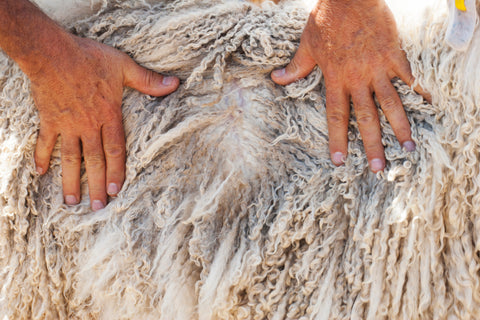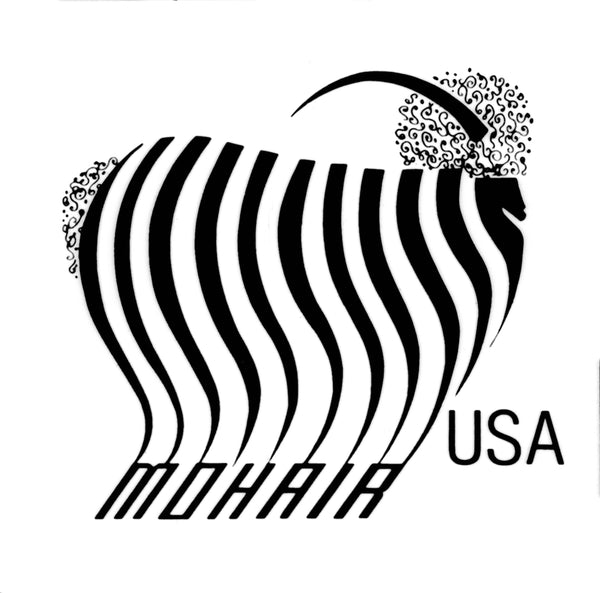The Mohair Process

1. Raw Mohair – Mohair is shorn from the Angora goat twice a year. The shearers use power driven clippers similar to those used by barbers and remove the fleece with long smooth strokes. It is then rolled separately, classified, and packed into bags holding about 70 fleeces and weighing approximately 400 pounds when full.
2. Scouring – Mohair is scoured by moving it gently by rakes through a series of tubs containing a soap and water solution. It is then rinsed. During the scouring process mohair loses about 20% percent of its weight when natural grease (lanolin) and soil are removed. After scouring, the mohair is passed through a series of squeeze rollers and finally dried. The purified lanolin by-product is used in face creams, soaps, and ointments.
3. Dyeing – Mohair can be dyed at several stages in the processing. If dyed after scouring, it is called stock dyed mohair; if dyed after spinning, it is referred to as yarn dyed; or if dyed after weaving or knitting, it is called piece dyed. Mohair fabric can also be printed by screen or roller methods. Because mohair is a protein fiber, color tints are absorbed into its core to give rich and lasting hues.
4. Carding – Carding blends the various types of mohair fibers, removes vegetable matter, and straightens the fibers so they will lie in the same direction. This is done by passing the mohair through a system of rollers covered with wire teeth that form the fibers into a thin web. If the fiber is to be spun on the woolen system, the web at this point is gathered into narrow strips that are joined to form the roving or silver.
5. Combing (Worsted System Only) – If the fiber is to be spun on the worsted system, the mohair card silver is then combed to remove the short fibers (noils) and to further straighten the long fibers for production of fine yarns that are smoother than woolen systems yarns. The result is a thick strand call “top”.
6. Drawing (Worsted System Only) – In the worsted system, after combing, the number of fibers in the top is reduced by a series of processes called drawing. The drawing silver is taken directly to the spinning frame where the roving is twisted to produce yarn.
7. Spinning – The spinning process, which follow either carding (step 4) or drawing (step 6), is the twisting of the silver into singles yarn. When two or more of these yarns are twisted together, they form ply yarns, which are stronger than singles. Yarns vary in size, twist, ply and novelty effects and are a part of the plan of fabric designing. After spinning, the yarn may be either knitted or woven.
8. Weaving – Woven fabrics are made on looms by interlacing at least two sets of yarn, either woolen or worsted, at right angles to each other. The lengthwise yarn is the warp. Threads running crosswise in the loom are called weft or filling. As warp thread passes through the loom, it is raised and lowered by a wire eyelet through which it is threaded. Filling thread is passed through the openings created in the warp to form the woven fabric.
9. Finishing – As the fabric comes from the loom, it is inspected for defects. The fabric can then be napped by a metal brushing process or sheared to give a smooth uniform appearance. Various chemical finishes can be applied to obtain such advantages as mothproofing, stain resistance, and wash-ability.
